|
I moved to Hallidays Point in May 2022. While our new home had a small ornamental garden, for me having herbs and veggies was a must. So one of the first things I did was to look around to see what was growing in the neighbourhood. Given the coastal location and sandy soils, I was surprised at the variety of vegetables, herbs and flowers, ornamentals and even fruiting trees that were doing well.
I also planted a couple of poppy plants just for the pleasure. Since then we’ve added summer crops - cucumbers, capsicums, rhubarb, basil, and other herbs. The results have been amazing! It’s truly a delight to harvest produce on a daily basis. As with any successful garden, the quality of the soil matters. We added perlite to a premium potting mix to help with aeration and drainage. Coming from a garden with abundant citrus, it doesn’t seem right to have to buy lemons and limes, so we are now growing a Meyer lemon and Tahitian lime in large pots positioned at the front of the house to maximise the sun. A tamarillo tree and passionfruit vine is also growing in pots. There’s always room for a gardener's favourites.
0 Comments
In March 2021, we invited a community member from Gloucester to speak at MidCoast Council’s water resilience meeting. She shared the story of the community’s resilience to the 2019-20 drought. She talked about how people had even tried to capture the dew drops, hoping to save their much-loved garden. She reflected on the community’s adaptation to drought, including gardeners incorporating more water-friendly plants in their garden. During the drought, our primary water scheme, the Manning Scheme, which supplies drinking water to a population of 80,000, almost ran out of water. The Barrington River stopped running, and we carted water from Tea Gardens to Gloucester for 29 days during December 2019 and January 2020. We also fast-tracked the expansion of the Nabiac borefield, and planned for a temporary desalination plant to supplement the Manning Scheme. In the end, we did well to manage the drought. The 2021 NSW Local Government Excellence Awards highly commended our drought response. Climate science indicates increasing variability in weather patterns. AdaptNSW’s climate mapping for our region (also discussed in Our Region: Climate Change and the Midcoast) suggests a decrease in rainfall in summer and winter and an increase during autumn and spring by 2030. The following table abstracted from AdaptNSW shows the projected climate changes. These climatic changes make water planners think about options that are less dependent on rain. We cannot build ourselves out of a drought - this is one lesson that climate events across the globe have reinforced. In simpler words, engineering solutions alone cannot solve our water security issues. We need to think and act seriously about soft engineering solutions, including leak management and water use behavioural changes. MidCoast Council’s Integrated Water Cycle Management Strategy (IWCM), which is currently under review, is our water security plan for the next 30 years. It considers all the lessons learnt from the recent drought. The strategy is taking an ‘all options on the table’ approach, and will present a portfolio of futureproof water security options to the community. The Strategy also takes into account predicted changes, as illustrated: Council has incorporated this principle in its approach to the urban water cycle. We shifted from being an emergency Drought Response Team into a Water Resilience Team that meets every month and coordinates our preparedness as a water-sensitive region. The story mentioned at the beginning of the article was shared at one of these meetings. As we heard from Gloucester, the resilience of the community to adapt to the water pressures during the drought has been exceptional. In rain or shine, we need to save every drop we can. In summary, we need to carry forward the lessons learnt from the drought. As of 10 February 2022, we have saved 120 million litres of water through leak management using our smart meter project, which commenced in March 2021. This is six days’ worth of water supply for our region. Imagine 48 Olympic-size pools - that’s how much water it is.
We grow flowers for weddings so we are pretty keen weather watchers at the best of times, but especially during harvest/wedding week. Whilst rain is wonderful for plants, it can be detrimental to near full flowering blooms that I wish to use in our arrangements. Harvesting the flowers at the right bloom stage and as close to the event as possible is key. Knowing the potential weather impacts is hugely beneficial. A little note on wind – wind is the worst! In 2019/20 we experienced the dry and the fires. We were getting water trucked in for home use and for water for our animals. The grass was crispy underfoot and our beautiful river was near empty – stagnant and green. Having weddings booked around that time was an added worry. Our plants were fending for themselves. This was around the time that I formulated the idea for the Manning Valley Flower Collective. What a weight was lifted! Knowing people in our local community growing flowers who were prepared to cut and sell on to me, was a life changer. Whilst being able to stick with our ethos of local flowers for weddings, we didn’t have to sit with all that weight of responsibility solely on our gardens which is especially comforting during times of challenging weather. The accumulative efforts of our flower growers will always lead to local flowers being in the hands of people who want them as an accompaniment to their celebration. In 2021/22, we’re having another La Nina summer with above average rain. We plan to plant as much as we can, thinking ahead to the drier times which will inevitably come. Annuals can be water intensive for them to flower at full capacity. Well established perennials and shrubs on the other hand can get by with very little in dry times so I plan on future proofing our gardens by having a diverse range of flowering shrubs/natives/perennials and the idea is to get them established when rain/water is readily available – which according to all reports is now!
'The question is not what you look at but what you see' - Thoreau. We also need to train ourselves to 'see'. Environmental constraints sometimes force us to look at what is growing around us differently. We never guarantee the use of a specific flower variety as there can be so many variables outside of our control. When life gives you lemons make lemonade – when rain decimates your dahlia crop, look around you. We explain that we will use the best in bloom the week of a wedding. Beyond the flower look for the seedpods, the twisted stems, the grasses or the berries. You can use all manner of things in a design which are beautiful and can enhance an arrangement and be a showstopper unto themselves. Whilst at the same time being a beautiful mirror of the time and place you are living in.
For a climate resilient cut flower garden:
The long term impacts of what’s to come due to climate change is scary to think about especially after experiencing some of the predicted wild weather first hand over the last few years. All I know is that putting plants in the ground, especially the perennial types – is a great thing. Get your plants settled in with this rain and their resilience will see you and the planet through any trouble and strife down the way.
Stef GarlandStef is a founding member of Midcoast Growers Network, a keen gardener, and great photographer. The recent drought and severe water restrictions in the Mid Coast region brought home to us gardeners the importance of selecting plants that are water wise. Here are just a few of my favourite perennial plants that while being drought and heat tolerant don’t become escapees to the bush, and provide much welcome colour and contrast throughout the year.
The Long-leaf Waxflower, Philotheca myoporoides, a native to south eastern Australia, is also on my list of favourites. While only flowering in winter and spring, it has a spectacular display of pink buds and starry white flowers and the leaves have a lovely fragrance.
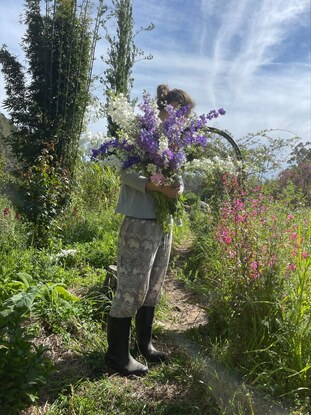 Arms overflowing with flowers for bunching (photo: provided by Rachel Falla) Arms overflowing with flowers for bunching (photo: provided by Rachel Falla) The summertime garden is all about abundance. Arms overflowing with flowers for bunching, and space cleared under the aircon to keep them cool! When I think about the summer garden, I think oversized, prehistoric grandeur. Flowers in a summer garden should be allowed to grow over our heads. If you want flowers in the spring time, plant in autumn. If you want flowers in the summer, plant now! A summer garden needs the heat lovers - the zinnias, cosmos and amaranths of the world. Cut and come again flowers are invaluable in a cut flower garden. The zinnia queen lime series is a firm favourite of mine for its beautiful soft mix of lime, blush and pastel, with each flower a different shade to the next! At the moment we are also planting out celosia, orlaya, scabiosa, phlox, strawflowers, coreopsis, statice, sunflowers and dahlia tubers. Dahlias are worth their weight in gold and more. For very little effort you are rewarded with the most awe-inspiring blooms of all colours, and a huge range of shapes and sizes flowering in summer and into autumn. Dahlia flowers last longest when freshly picked from your garden. Florists love local dahlias because these flowers do not travel well. Local is always best when it comes to flowers! We grow cut flowers and oranges at Caffreys Flat on Biripi land alongside the Nowendoc River. The Little Orange Farm is in a renowned orange growing area, with our nearest town of Mount George being once famous for its orchards. These have since unfortunately been removed. Alongside our flower garden is the orange orchard consisting of roughly 250 trees, some of which were planted back in the 1950s. Our area gets frost in winter, gusty winds in the springtime, and a rising river in autumn. Our off-season for the flowers is in the winter time when the oranges come into their own, followed in the spring time by their blossoms. We are growing our flowers roughly on a third of an acre.
I’ve fallen in love with the wild growing verbena and love using it in arrangements. The best part is that I don’t have to sow or plant a thing. Embrace what is growing wildly and try to start seeing a flower and not a 'weed'. There is always a lot of forward planning to make sure we have plants ready to go in the ground at their ideal growing time. As they say, do something today that you will thank yourself for tomorrow! A Gardener’s List: Bed prep, sowing, transplanting, deadheading, mulching, planning. Smell the mint (especially if it’s apple mint!), make a bouquet to give to a friend, collect seed, take a photo, look closely, feel small. 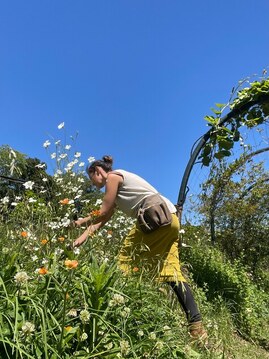 Whilst it is important to be able to look ahead and plan and dream of that summer garden, it is just as important that I be present in the here and now – appreciating today’s flowery gifts. I never go to the garden without my camera phone and scissors. There will always be something new and inspiring in a garden day after day and I never tire of bearing witness to it. I so enjoy sharing my excitement with others. Right now, the snapdragons are in full bloom, equally loved by me and the caterpillars. There are sporadic roses on the bushes offering us a teaser of what’s to come, and the corn cockle of pure white floats above it all like butterflies. 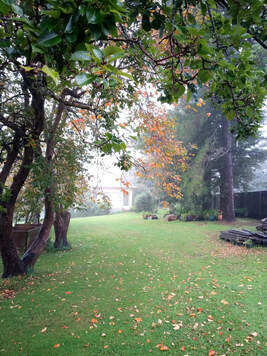 Tranquil Garden (photo: Kara Woodward) Tranquil Garden (photo: Kara Woodward) The Tranquil Garden Nursery is my realization of a desire to live on the land, with the ability to rescue more animals, and to grow lots of flowers and food. I grew up in the Cotswolds in the United Kingdom, and moved to Australia at the ripe age of four. A few years later our family moved to 250 acres in the Hunter Valley, which was also a commune for about four years. There, as I wandered the land alone, I developed a true love of animals and plants. This led me to a career working with animals as a Veterinary Nurse, a Zookeeper, and wildlife keeper. I retrained as a teacher after the loss of most of my precious animals during the Canberra 2003 devastating fires. Unable to stick to a mandated unrealistic curriculum, I wanted to teach more life skills, such as animal care, and to have more than just a lunchtime gardening club. This forced me to leave teaching and pursue life on the land again. Initially, I worked gardening in many local Mid Coast gardens, and not so much in my own. When I met Lainey our local Matriarch in about 2011, we really connected. Her obsession with Dahlias resonated with me, and so began my own collection of these tuberous perennials. Now 92, Lainey is still living in her own home. From then on, I grew a lot of mostly flowering plants with produce and started to take them to local farmers markets such as Wingham, Gloucester, Taree, Forster and others. This as many know is bloody hard work, especially as selling plants can be hit and miss, so I don’t go to the markets to sell anymore. Around the same time - in 2011 - I took on two rescue Whippet cross red Cattle dog pups. One I gave to my Mum. Now I have Miranda, who has had quite the journey right by my side. 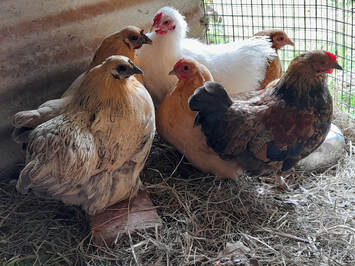 Nettles grow in my chicken's pen (photo: Kara Woodward) Nettles grow in my chicken's pen (photo: Kara Woodward) Let me share what happened. Growing plants without chemicals is so very important to me. Recently, in fact in June my dog came down with mysterious symptoms and I took her to one vet as her symptoms were mild at that time. Not long after that, Miranda was unable to eat or drink by herself. Nursing her myself had not improved her condition, and she could only just manage to go outside by herself. She was put onto a drip and nursed for a week in a local Veterinary Hospital. Seemly as a last resort she was put on to prednisolone which initially helped but was a double-edged sword as not long after she developed anaemia and almost died. I took her to the vet again and no connection was made with the prednisolone by them, however between myself and a friend we worked out that it was due to the prednisolone and she was bleeding in her bowel. Massive doses of CBD oil I believe, and diet change saved her life. I reduced the dose of Prednisolone and got her off it fast whilst introducing a whole food diet made from scratch. this diet comprised and still does of cooked Bok choy, raw liver and cooked pumpkin, or sweet potato blended all together with a small amount of water. I also provide her with a bone broth frequently and fresh bones. After about a week on this diet, she started to improve remarkably. Then I started using the Nettles that grow in in my chicken’s pen. Nettles are apparently a good sign of a healthy soil, so that is great to know. Miranda frequently gets them blended in with her food. I do believe that this, along with CBD oil and homemade activated charcoal, has saved her life. Now Smudge the cat is on this diet too. He has lost weight, and he's a lot happier and brighter. So now I've accepted - it's more than important than ever that I continue to grow organic flowers and organic vegetables, and not use any chemicals. No chemicals are used in the house or in the garden or for myself. I've stopped dyeing my hair, and allowed myself to go grey quite disgracefully - but I feel healthier as well. I've also modified the chickens' and ducks' diets owing to a possible problem with either the food or a build-up of parasites in the pen. I took one of the ducks to a vet to have a look at and she was prescribed antibiotics which did help initially. Unfortunately, she went down again. My friend and I had a discussion, and it was based on her advice that I put the duck onto the activated brown rice which Miranda is also on. The duck soon recovered. From now on, the ducks and the chickens have plain wheat for breakfast and in the afternoon, they have sprouted wheat along with the Greens I used to give them, and scraps. I've also limed all their pens at 100 g per square metre with Mudgee Dolomite lime against possible parasites. Being home more means I can help more with local injured and sick animals. I take in abandoned ducks, chickens, and the odd cow. All the animals here have a forever home. I’m a member of the wonderful Manning Valley Flower Collective and sell my organic flowers locally. I sell most of my plants via a website www.tranquilgarden.com.au and via eBay. I post plants across Australia except Tasmania, Northern Territory and Western Australia, due to quarantine restrictions.
Annette James, Education Coordinator, Midcoast Council My thanks to Ron, Stef and the team for inviting me to add a few words to this first edition of the MidCoast Growers Network website. Since moving to the MidCoast region a few years ago, I have been on a fascinating journey of discovery about food and production in this beautiful region. In this time the region has been in a sway of drought, bushfires and flooding rains, to both survive, and to recover. When Stef and Ron sought to create a resource guide of local information to build resilience to our changing climate, I knew it could be an important addition for all home and community gardeners. Creating a guide, a series of resources from shared experiences, would benefit not just the lay gardener like myself, but it would connect me to a network of people with inspirational local knowledge. As you know, the structure and composition of soil is a vital life force and that a soil rich in humus and nutrients adds to that vigour. One of my challenges in waste education and resource recovery at MidCoast Council is to build the percentage of waste diverted from landfill. One third of all household waste thrown away, and sent to landfill, is organic and compostable. The problem is, in landfill it contributes to methane production. The organic waste also contributes to landfill leachate. I am not telling you anything new - the environmental risks associated with landfill and the potential impacts are well known. What you may not know is just how important YOU are in reducing organic waste going to landfill. Composting garden and kitchen waste not only provide rich plant food and fertiliser for your garden, but is a vital part of the cycle of sustainability. MidCoast Council’s Scraps to Soil program aims to move this food waste from the household red landfill bin into compost. Whilst COVID-19 has interrupted our Scraps to Soil program, it is hoped we can return to ‘normal’ sometime soon, and extend our workshops offerings through this Network. I welcome the MidCoast Growers’ Guide: Building Resilience to a Changing Climate as an important adjunct of detail and inspiration for MidCoast growers.
Something to consider if you do not have a garden is to get involved in your local community garden. Community gardens provide a great opportunity to learn about food production, composting and much more. I believe it's intrinsically important to be connected to nature and a garden can provide endless enjoyment. The details are here and if I can assist your school or community groups learn more about waste diversion please contact me at [email protected] Spring is a wonderful time to get gardening. Cheers, Annette Story and pics by Gayle Freeman, Rainbow Flat The 8th November 2019 was a day my husband and I will never forget. We were one of many properties affected by the bushfires of 2019, particularly the fire which spread at a rapid rate from Hillville, south-west of where we live. We live at Rainbow Flat on 2.5 acres surrounded by native flora, many species endemic to our area, and also with a significant koala population. Our south eastern paddock was fringed by old growth native trees, shrubs, groundcovers and natural habitat. The remaining parts of the property consisted of fruit trees – nashi, mango, macadamia, mulberry, olive, apple, pear and avocado. Our vegetable patch grew an abundance of seasonal vegetables, a portion of which was preserved for the pantry. As a gardener, I love to create spaces that transform the mind and soul. Coming from Wentworth Falls in the Blue Mountains, I longed for the beautiful deciduous trees for their colour, form, and free leaf mulch. The front south-easterly facing garden was just that - my mountain garden. The garden consisted of various types of bulbs, flowering trees and shrubs such as claret ash, flowering cherry, flowering pears, maples, camellias, and azaleas, along with a mix of annuals and perennials for our bees and beautiful bird life. Another garden room we created was the tropical garden. This garden's primary role was to shade the house from the westerly sun and create a cool environment away from the burning heat of the late afternoon. It also created a sanctuary for our large frog and bird population. Unfortunately, these gardens are now a memory due to the bushfires destroying 80 percent of our gardens. Fires are incredibly destructive, taking native bush, habitat and fauna species along with the microscopic populations such as insects, which form a valuable link in our ecosystems.
Our koala visits lifted our spirits and gave us a new perspective on the work ahead of rebuilding our gardens. Although daunting, we observed how incredibly resilient the natural environment can be. Our first task was to assess the more dangerous trees of which the root bulbs continued to burn for days later. We then engaged an arborist to assess which trees needed to be removed. Only those assessed to be dangerous were removed and chipped for much needed mulch. We then decided to work on replacing infrastructure such as fencing and setting up a compost system. The next phase was to monitor nature’s recovery. Given the timing of the summer rains we were able to watch as the old growth trees came back and seeds distributed by the bushfires germinate. We left logs where they fell and this provided much needed habitat for creatures when they returned. Most importantly we didn’t touch the ground for 12 months. By doing this we were able to see which trees were going to survive - thankfully most did. Unfortunately, weeds tend to germinate just as quickly after a fire with quick succession of rains. This can be used as an advantage in the stabilisation of the ground, as fire ash can make soils resistant to becoming wet, and can cause run off, hence land degradation. Once our natives started to reshoot, we laid discarded cardboard to control the weeds, and laid a layer of mulch over the top ensuring not to smothering saplings coming through. This was the commencement of the revegetating of our native borders. Our insect population took 12 months to come back. We missed our beloved bees, but they too came back. Our resident kookaburra family were back after a week.
During the last year and a half, our focus has been on mulching and pruning. We have drawn up plans for the gardens based on permaculture principles. Plant selection is ongoing, along with propagation and seed germination. These are cheaper options when starting over for a garden of this size. We know a garden is never complete; it just evolves and is forever changing. A valuable lesson after such a devastating event is to observe the natural environment and be patient. Story and photos by Stef Garland Whether you’re new to gardening in the Mid Coast area and not sure where to start, or you’re needing some fresh inspiration, there’s nothing quite like learning from other people’s gardens. We are fortunate to have in the Mid Coast region an inspirational garden that is open to visitors every month. Limestone Permaculture Farm, owned by Brett and Nici Cooper is a one acre demonstration property in Stroud Road designed and operated on permaculture principles. I’d like to share some highlights of the Limestone Farm tour that I took in July 2021. While overflowing with every kind of plant you can imagine the Limestone property is much more that a collection of edible and useful plants. It is a demonstration of creative design solutions that covers orchards, vegetable gardens, commercial crops, poultry and goats; and nooks to sit and contemplate, and flowers for the bees. As we toured the property, Brett explained the permaculture principles behind each feature of the site and the techniques he uses. 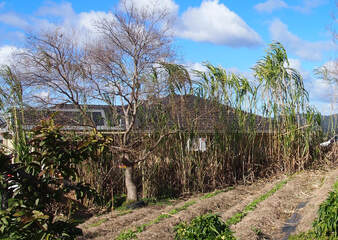 The site demonstrates multiple uses for most things in the garden. The bana grass, for example, which is used as fodder for the animals, also acts as a privacy screen and a great windbreak. On the day of the tour it was very windy so we could see for ourselves how effective the bana grass and other plants like the lilly pillies were as windbreaks across the site. Brett showed us how different plants are grown together in ‘guilds’ to provide protection from weeds, frost, heat and wind. By growing such a large variety of plants, and different varieties of the same crop, there is something to harvest most of the year around. We saw just how many apple varieties could be grown using the espalier method. It also helps make picking easier. The most inspiring part of the tour was hearing Brett talk about solutions rather than problems, whether managing water on the site or coming up with clever storage ideas for equipment and produce. In response to the increasing number of hot days in summer, it was great to see innovative approaches for creating shade to protect plants. 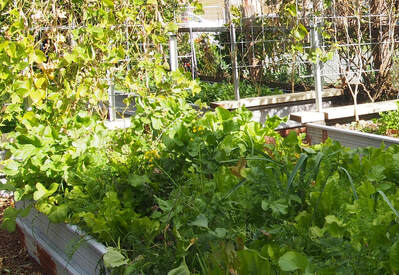 Although our gardens are all different, the principles apply at different scales. Even the smallest backyard can grow a vibrant kitchen garden full of salad greens. The garden bed in the photo was planted out with a variety of greens (and garlic) in autumn, and through selective harvesting, continues to produce abundantly through the winter months. I can’t wait to go back and see the Farm again in summer. Whatever time of year it is, I can highly recommend you book into a tour with Brett. And I didn’t even mention the delicious morning tea made with farm produce!
Story and pics by Stef Garland, founding member and patron of the MidCoast Growers Network  In this post I will share a few things that I’ve learned about soils in the process of building a garden in Copeland, where I moved to in 2014. Like so many new property owners who are keen to build a garden, my question was where to start? Informed by my horticultural studies, organic gardening magazines and books, and experiences with previous gardens, I formed a view of my ideal garden. It was a garden with a large variety of fruit, vegetables and flowering plants that looked beautiful together and were grown in a way that reduced the need for weeding, watering, and fertilisers. It was a garden that was designed with nature in mind, and provided a home for birds and other wildlife.
My approach was to create a series of terraces, starting close to the house and working down the hill over time. The raised terrace beds helped improve drainage while also keeping water on site. Hiring an excavator to create the main terraces on contour was a great investment. The earthworks included a network of paths in between the terraces for easy access and reducing soil compaction in the beds. Forming terraces around the existing fruit trees, - citrus, olives, figs, apples and pears made a big difference to their growth and productivity. To give new (and existing) plants the best chance to thrive I then turned my attention to improving the soils. Every source of gardening advice about soil improvement has a common message - organic matter is the key! Even with a number of compost bins and compost bays, and a ready source of animal manure and grass clippings, making enough compost to go around my various garden beds proved to be an ongoing challenge.
Plant selection, while another whole topic, is very relevant to maintaining healthy soil. I grow plants such as comfrey, arrowroot, lemongrass and bana grass for a ready source of mulch. Groundcovers around the fruit trees also help protect the soils from drying out, so long as I choose plants such as herbs, strawberries and greens that don’t compete with the root systems of the fruit trees. I’m pleased to say that by maintaining these practices year in and out, through the changing seasons and climatic conditions, I have created my ideal garden.
|
AuthorArchives
February 2023
Categories |

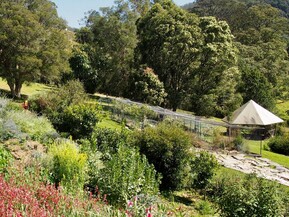
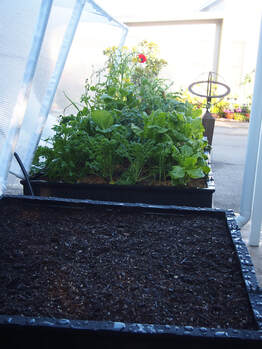
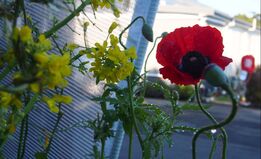
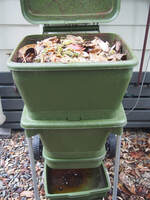
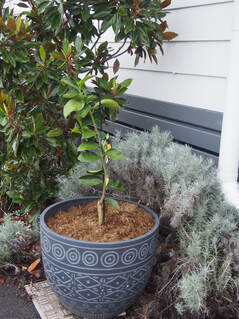
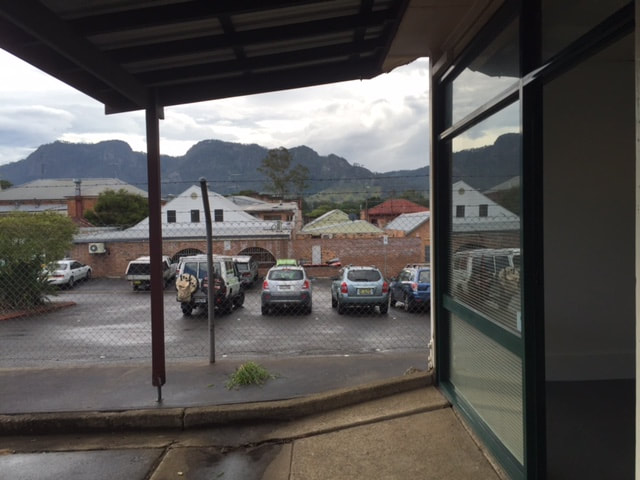
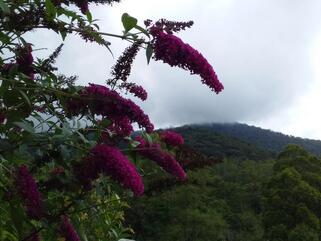
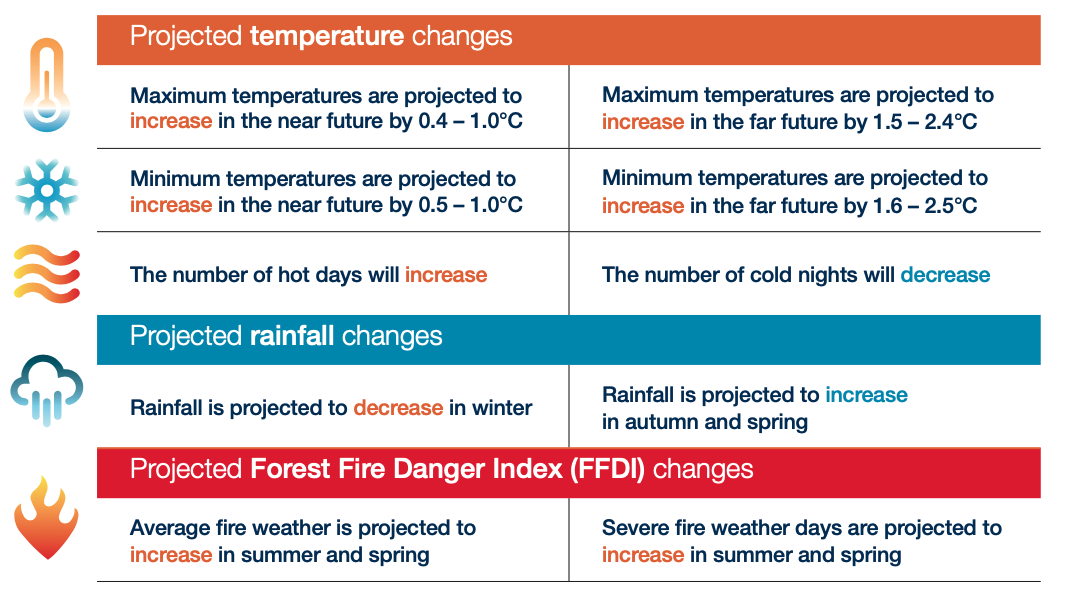
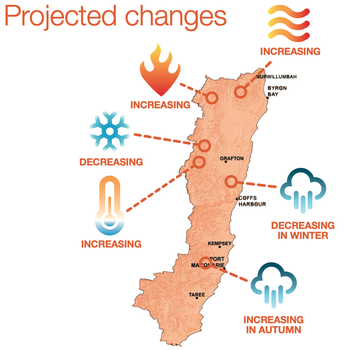
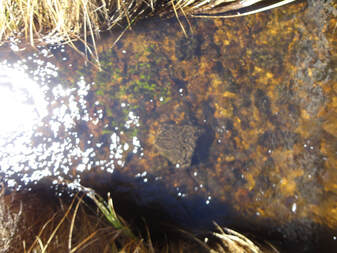
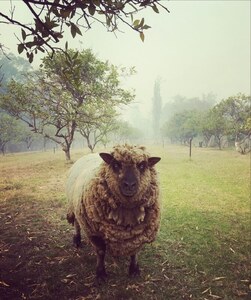
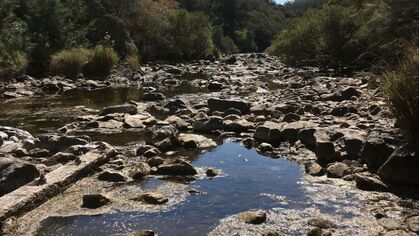
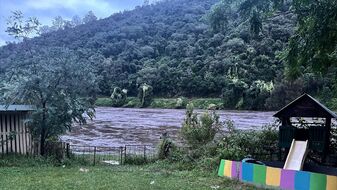
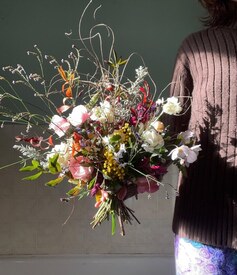
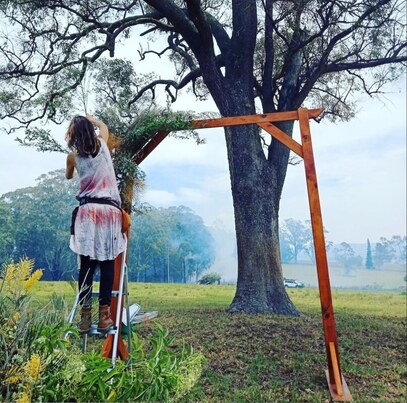
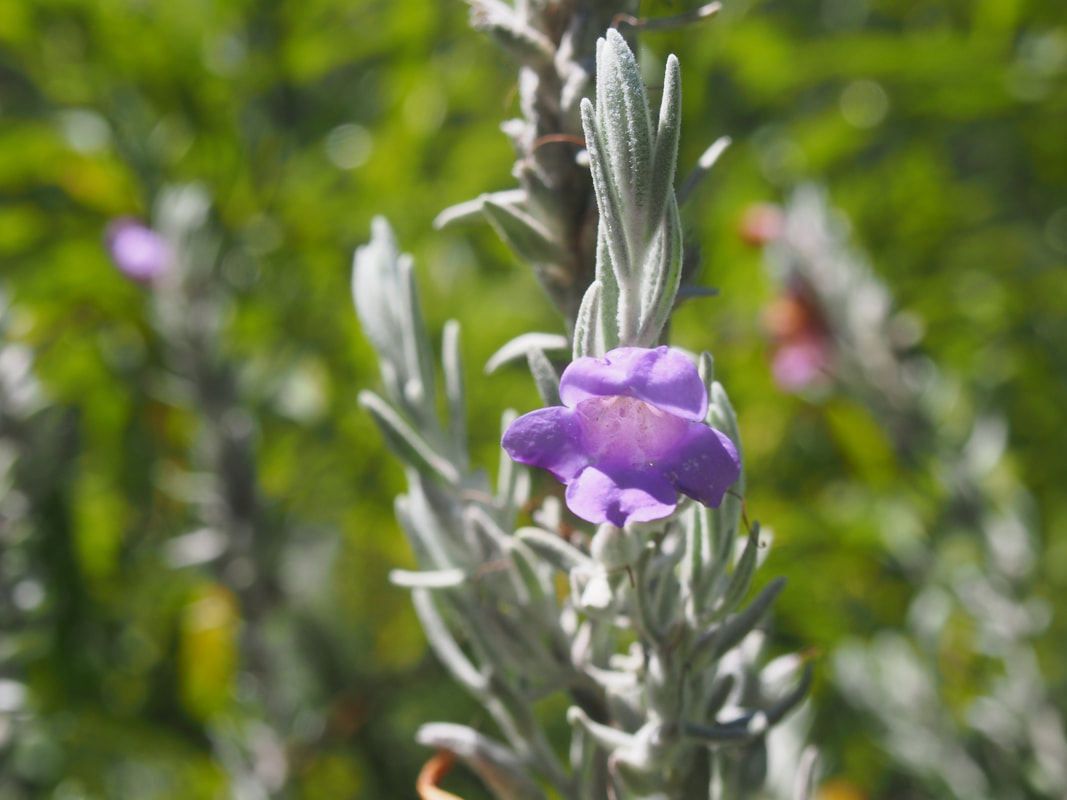
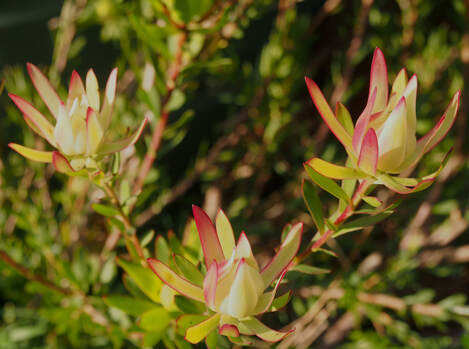
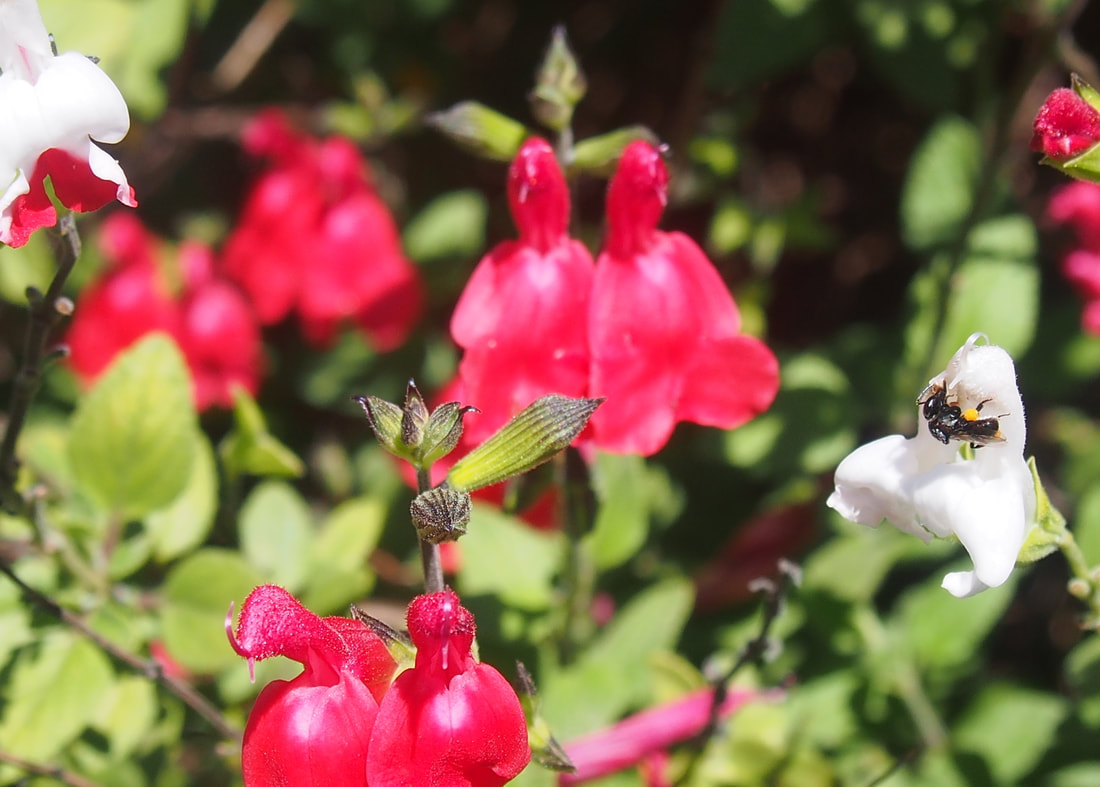
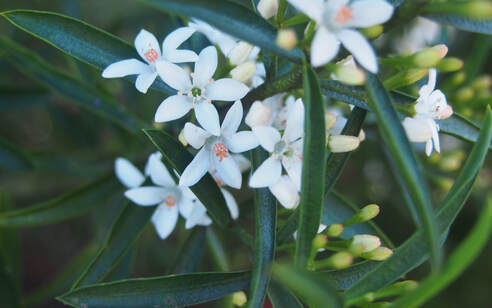
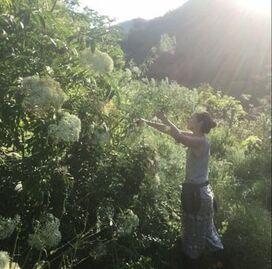
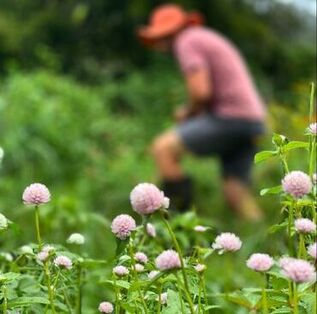
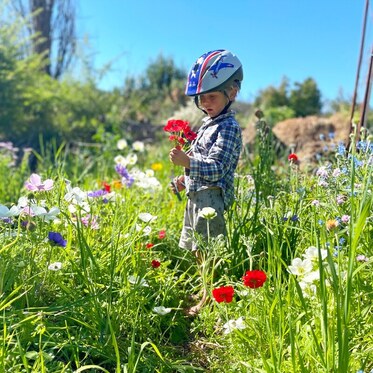
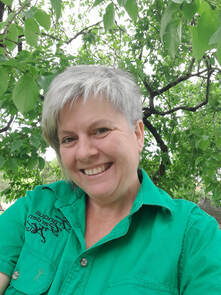

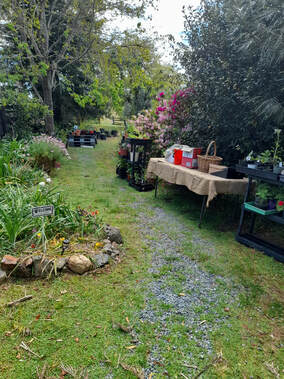
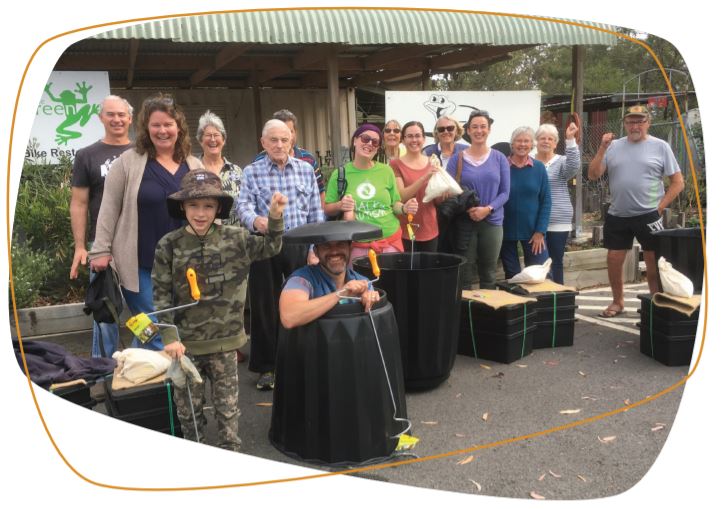

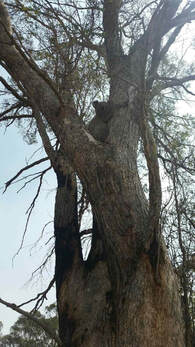
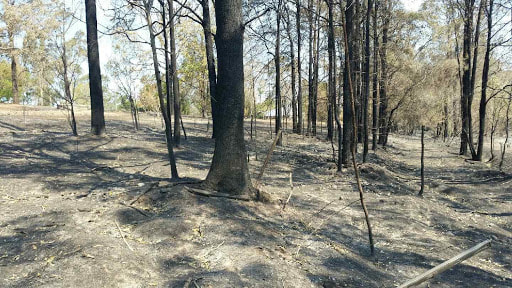
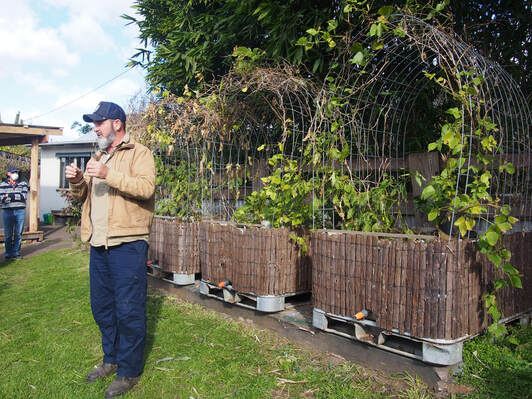

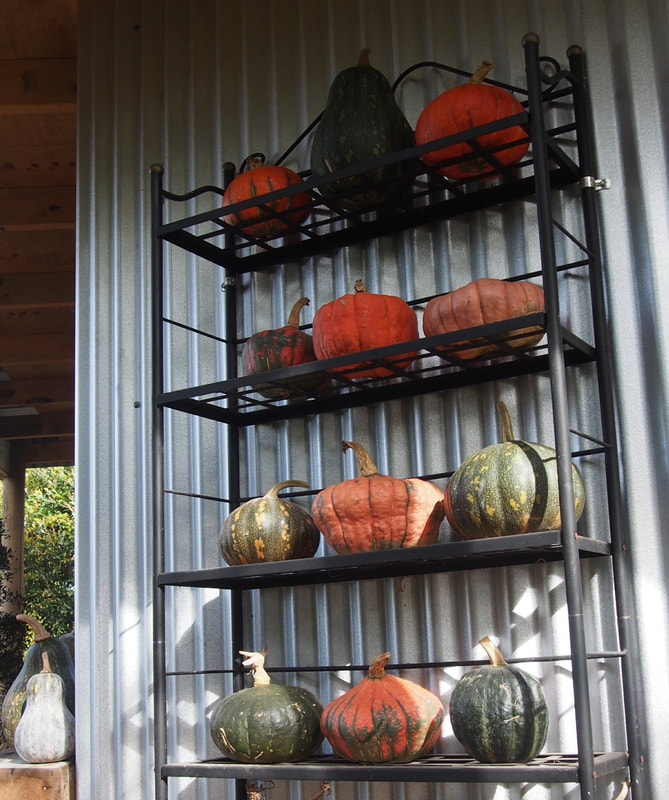
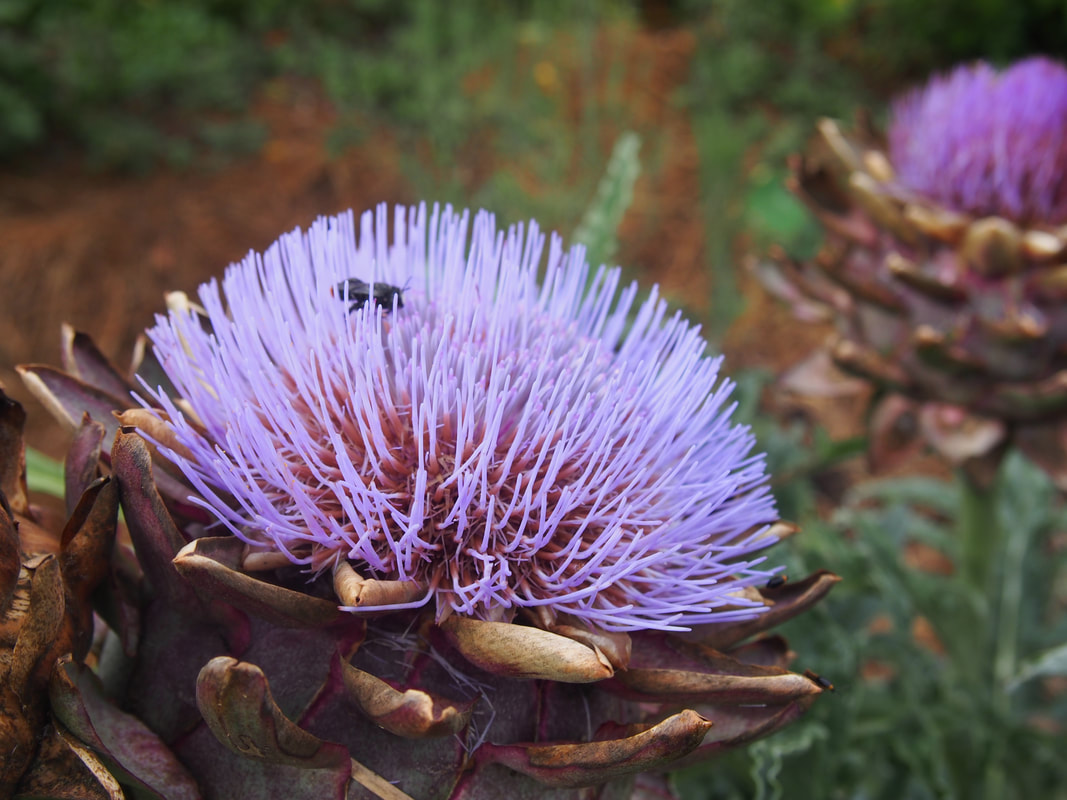
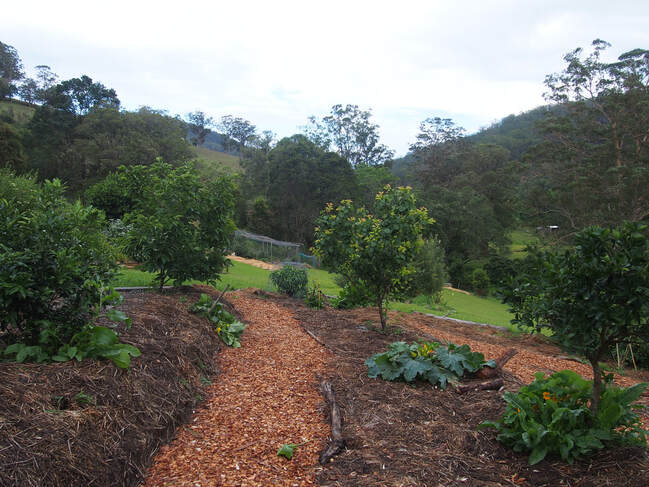
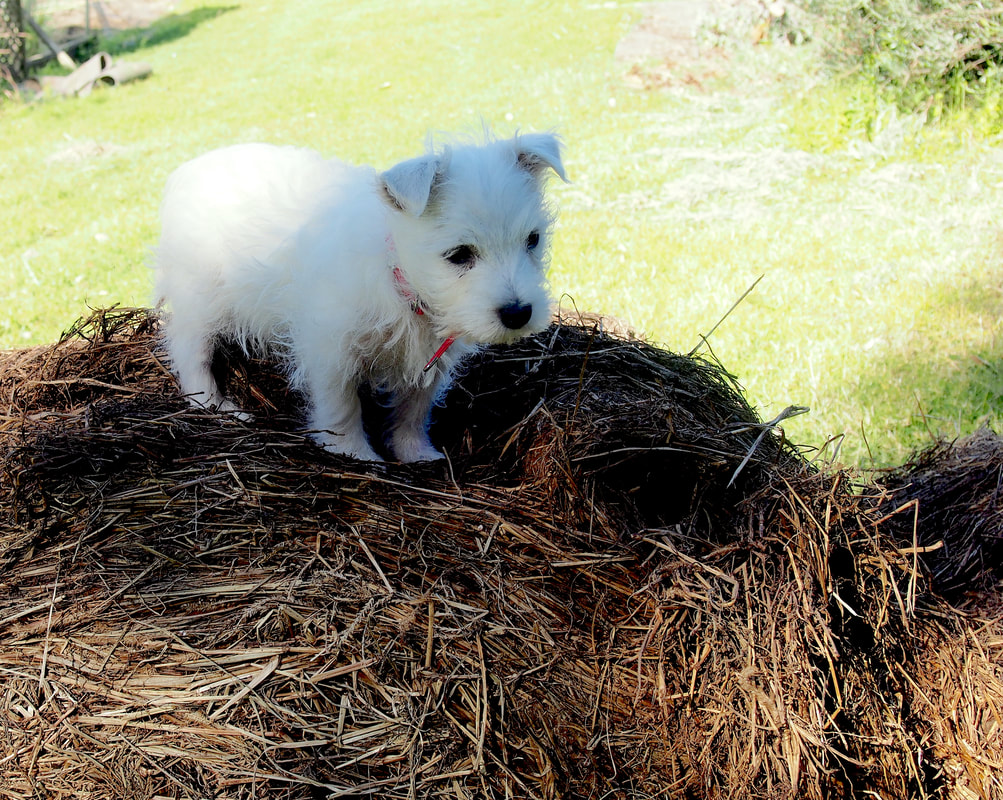
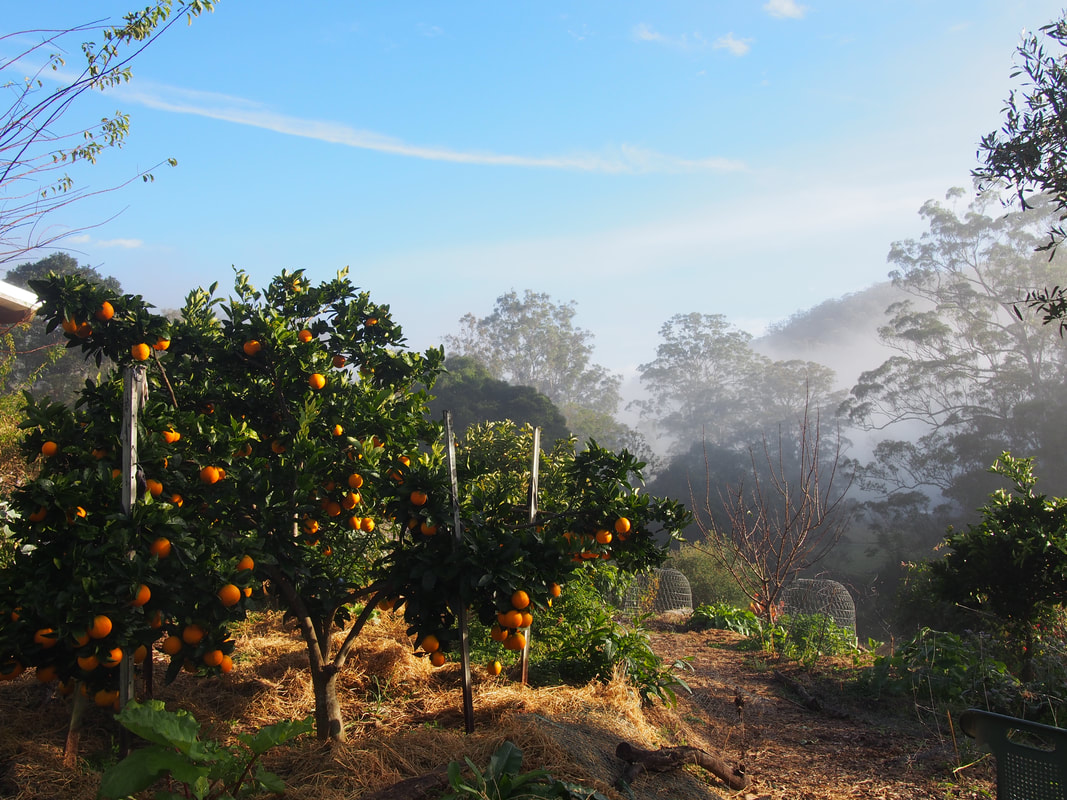
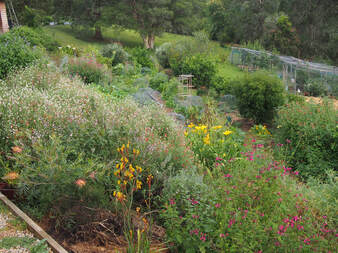
 RSS Feed
RSS Feed
